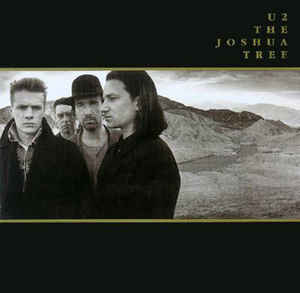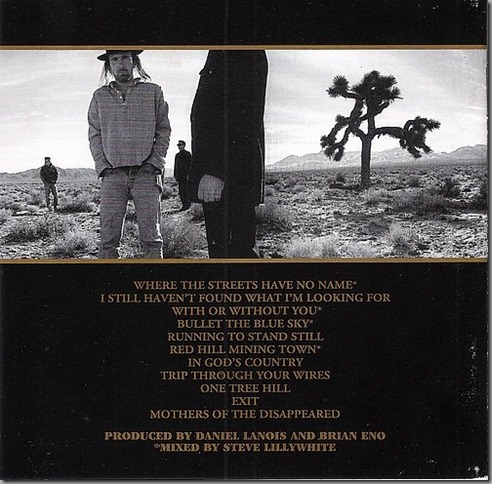Every year since 2005, my friend Mike at bsidesnarrative.com and I have been compiling our “Best of” lists. It’s a competition without a winner or a loser. It’s a way for us to communicate about music and share our thoughts without being able to chat as much as we’d like anymore. The above link will take you to his list.
The 100 Best Songs of 2017
The year 2017 was a bunch of whatever. Broken. The Upside-Down became our reality. While all that nonsense raged on and fueled our fears and whipped our disillusionment into a lather, the year found time to beget a veritable trough of earhole-worthy jams. It was a year of transition, a coming-to-terms with the dumpster-fire status quo. We may not like the world in which we live, but the torrent of inspired and reactionary art may be the silver lining to the coming apocalypse. #SmallVictories
I tweaked the “Best of” rules this year. For 2017, I’m only allowing myself one song from each artist. This benefits you in two ways. 1) You won’t be forced to read a list of nothing but Valerie June, The War on Drugs, and Alvvays, and 2) I get to pick more artists and more songs. If you’re reading any of these 2017 lists, you’re likely looking to find new records and artists to make these days more meaningful/beautiful/soulful/tolerable. Or you’re hate reading and shaking your fist angrily at your computer screen. Either way, thanks for the click.
And I reserve the right to completely change my mind about all of these songs next week.
Disclaimer in perpetuity: I’m still just one guy and while I listen to a lot of music, there are people who listen to a lot more. Like the folks at Aquarium Drunkard, My Old Kentucky Blog and Said the Gramophone — my three go-to music blogs. In many ways their input came together to form these year-end lists like Voltron.

Past years of the Best of: 2016 / 2015 / 2014 / 2013 / 2012
Bonus picks: “What’s That Perfume That You Wear” – Jens Lekman; “No Coffee” – Amber Coffman; “Runaway” – Julietta; “Do You Still Love Me?” – Ryan Adams; “No One Like You” – Blue Hawaii; “Still Waking Up” – Tim Darcy; “I Know A Place” – MUNA; “I Promise” – Radiohead; “Keep Walking” – Kelly Lee Owens; “Soothing” – Laura Marling; “Wild Indifference” – Joan Shelley; “Westermarck” – Charly Bliss; “Stellular” – Rose Elinor Dougall; “Sweet Saturn Mine” – The Moonlandingz; “call the police” – LCD Soundsystem; “The Fear” – The Shins; “Old Time” – Willie Nelson; “Ran” – Future Islands; “You Never Come Closer” – Doris; “1234” – Kevin Morby; “There’s a Honey” – Pale Waves; “Baby Luv” – Nilufer Yanya; “Thinning” – Snail Mail
Covers:
“Sorrow” – Paul Shaffer And The World’s Most Dangerous Band (with Jenny Lewis) / “Valerie” – Ra Ra Riot / “Can’t Help Falling in Love” – Beck / “Fragments” – Blondie
For whatever reason, covers dominated my earholes in 2017 and while I have a hard time ranking cover songs in the main countdown, I reserve this slot for trends/miracles that deserve a little bit of time and attention. Back on January 6th, “Sorrow” was actually the very first track added to my “2017 Hits” list, which is the year-long collection of tracks from which I draw this countdown. To wrap up the covers portion of this countdown, Blondie checks in with a defiant, goddammit I’m still relevant wave goodbye on her cover of Adam Johnston’s piano ballad.

“Valley Boy” – Wolf Parade
So I cheated and added #101. I couldn’t neglect my boy Spencer Krug, who more than any other indie vocalist sings at the frequency of 30Hz.
“French Press” – Rolling Blackouts Coastal Fever
Melbourne 80’s indie-rock nostalgists sound like Real Estate and the Strokes at the same time. My birthday wish from 2009 just came true.
“Heartstruck – Wild Hunger” – Hamilton Leithauser, Angel Olsen
Angel Olsen shares Leithauser’s delicious appreciation for expressive 60’s-leaning vocal styles. The two bounce verses off each other like cunning Rock ‘Em Sock ‘Em linguists.
 “T.V. M.A.C.” – Mega Bog
“T.V. M.A.C.” – Mega Bog
Neo-jam-glam on *ahem* wry toast.

tie: “If We Were Vampires” – Jason Isbell and the 400 Unit / “Alleyway” – Anna Tivel
This is me. Weeping. Like a baby.
 “Let ‘Em Talk” – Kesha (feat. Eagles of Death Metal)
“Let ‘Em Talk” – Kesha (feat. Eagles of Death Metal)
Kesha’s Freedom Party 2017. A killer kiss off track backed by grumbly guitar rockers Eagles of Death Metal. The pop diva never sounded as comfortable in her own shoes as she does here, doubling as a riot grrrl.
 “Running Second” – Ainslie Wills
“Running Second” – Ainslie Wills
The terms “fierce” and “symphonic” come to mind when considering Melbourne’s Ainslie Wills. This teaser track from a pending 2018 LP promises more great things from this underrated songstress from down under.
 “The Blackout” – U2
“The Blackout” – U2
Most will balk when I suggest the best track on U2’s latest album sounds like a lost gem from the Pop era. “The Blackout” forces Adam Clayton to the foreground and the result is the freshest U2 track since “Discoteque.” #ILikePopGoddammit
 “Ouija” – Graveyard Club
“Ouija” – Graveyard Club
Dueling vocals and baroque synth. Stop teasing me with greatness and release the new record already you morose Minneapolis bastards.
“Deadly Valentine” – Charlotte Gainstbourg
Dramatic, grief-laden 6-minute vocal opus backed by strings and loss. Inspired in part by the apparent suicide of her half-sister, the Parisian actress and singer produced her greatest record to date. This song is one that will linger and grow and transform the more you listen.
“Ugly Human Heart Pt. 1 & 2” – Daniel Romano
An eccentric two-part romper stomper from the Canadian singer-songwriter.
“Call on God” – Sharon Jones & The Dap-Kings
I challenge you to give yourself to this song. Listen to the hope and the majesty in Sharon Jones’ vocals. Knowing the battles she fought and the live she lived. You will be moved. The late, great soul singer released the best record of her career after she was already gone. Her spirit endures.
“Rules” – Hoops
Two minutes and thirteen seconds of Hoops jangle-pop perfection. Why bother with more when you jangle that hard?
“Follow My Voice” – Julie Byrne
Julie Byrne’s voice reacts and recoils, occasionally suffocated. It’s a fragile human spirit — that voice. Gazing upon its mortality with wonder and fear and the depth of human emotion.
“Grandma Hips” – Your Old Droog, Danny Brown
I don’t know Coney Island’s Your Old Droog from a ceramic mixing bowl, but he had the wisdom to share the microphone with Danny Brown.
“Heavy Hearts” – Hater
Swedish quarter dropped their first full-length featuring this standout showcase of melodrama rock. Soaring vocals with a side of clouldberry jangle and jam-pop.
“Elegy” – Leif Vollebekk
Liquid melancholy backed by simple piano chords, metronomic drumbeats. Think Bruce Springsteen’s “I’m On Fire” recorded on a bedroom eight-track.
“39 by Design” – Drab Majesty
Andrew Clinco channels Clan of Xymox. Some have called it “neo-goth,” but let’s all agree never to speak that term again. Pitch-perfect deep, dark thoughts with guitar, reverb and deep, mumbly vocals.
“Pink Up” – Spoon
While “Hot Thoughts” got all the airplay, the understated “Pink Up” rose up from the B-side depths to rule Spoon’s excellent 2017 LP — their best since 2007’s Ga Ga Ga Ga Ga.
*also eligible for the countdown: “Hot Thoughts”
“When the Heart Attacks” – Gabrielle Papillon
Paste Magazine liked Gabrielle Papillon to Ben Folds, Joanna Newsom and Tori Amos as one of our most important singer-songwriters. I’m embarrassed to admit that I’m new here. I “discovered” this tremendous talent on her fifth LP.
“Show You the Way” – Thundercat (feat. Michael McDonald and Kenny Loggins)
Soul/funk/jazz impresario Thundercat (Stephen Bruner) impressed and beguiled in equal measure on 2017’s Drunk. Any artist that recreates a lounge-style atmosphere and introduces the likes of Michael McDonald and Kenny Loggins as special guests in the middle of a song (without *much* irony) has my eternal affection.
“Cold Apartment” – Vagabon
When Lætitia Tamko’s vocals interrupt the opening silence on “Cold Apartment” you stand up and take notice. Without tremendous range, she cuts with unique precision and gives Vagabon a singular identity.
“Dog Years” – Maggie Rogers
Fun fact: I stayed a couple nights in Easton, Maryland — Maggie Rogers’ hometown. I had some amazing oysters in a crab shack in February. I loaded them up with paralyzing amounts of horseradish and hot sauce. But anyway. This NYC-educated singer-songwriter’s the real deal and if you’re not listening to Maggie Rogers right now you’re going to miss out on the time period during which you can say you listened to Maggie Rogers way back when.
“Judy French” – White Reaper
It seems that someone, perhaps Louisville’s White Reaper, is having some fun on their Wikipedia page: “White Reaper is the worst band in the history of bands. Known for making the crowd want to punch a baby, their garbage sound should not be tolerated.” While I’m loathe to cite a Pitchfork review, I love that they summed up the White Reaper sound as cheeky, classic rock for the Camaro-set.
“Talisa” – Daniele Luppi / Parquet Courts
Italian producer Daniele Luppi unites superheroes of indie rock — Karen O and Parquet Courts — on this balls-forward guitar and bass driven driven ode to former model Talisa Soto.
“J-Boy” – Phoenix
Total snoozefest. Recommending a Phoenix track. What is this 2003? What’s old is new again. Phoenix and frontman Thomas Mars keep evolving. 17 years young, yet they’ve never sounded stale.
101 – 76 / 75 – 51 / 50 – 26 / 25 – 1


























